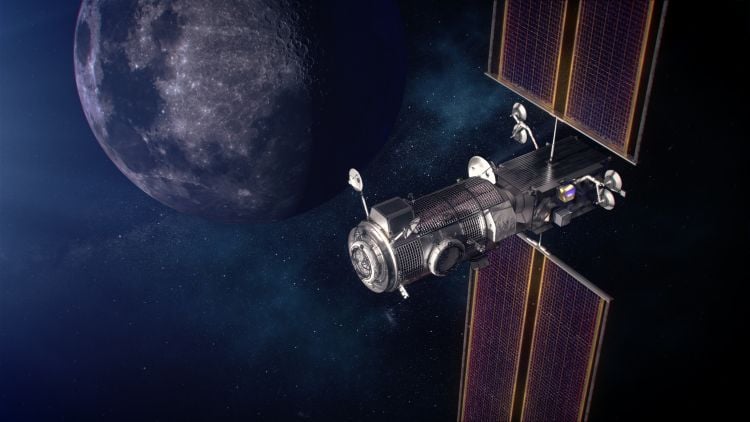Space And The Universe News
-
Traveling to Mars and Ceres Using Lunar Gateway as a Springboard
by Laurence Tognetti, MSc (https://www.universetoday.com/authors/laurencetognetti) on June 8, 2025 at 10:36 pm

How can humanity use the developing Lunar Gateway as an appropriate starting point for advancing human space exploration beyond the Moon? This is what a recent study presented at the 56th Lunar and Planetary Science Conference (LPSC) hopes to address as a team of researchers evaluated a myriad of ways that Lunar Gateway could be used as a testbed for future technologies involving sending humans to Mars and Ceres. This study has the potential to help scientists, engineers, astronauts, and mission planners develop novel strategies for advancing long-term human space exploration.
-
Future Telescopes Could Detect Life Managing their Planet Atmospheres
by Evan Gough (https://www.universetoday.com/authors/ion23drive) on June 8, 2025 at 10:36 pm

The challenge in the search for habitable worlds is clear. We need to be able to identify habitable worlds and distinguish between biotic and abiotic processes. Ideally, scientists would do this on entire populations of exoplanets rather than on a case-by-case basis. Exoplanets' natural thermostats might provide a way of doing this.
-
Did the Hubble Just Cancel the Milky Way-Andromeda Collision?
by Evan Gough (https://www.universetoday.com/authors/ion23drive) on June 8, 2025 at 10:36 pm

The idea that the Milky Way (MW) and Andromeda (M31) will collide emerged after decades of observations by a host of astronomers. The Hubble played a decisive role in the determination during the early 2000s. It was a triumph of precision astronomy and space telescopes. Now, the Hubble has played an equally important role in cancelling the collision.
-
How Likely Is Life on Mars?
by Paul Sutter (https://www.universetoday.com/authors/pmsutter) on June 8, 2025 at 10:36 pm

Mars is by far the most Earth-like planet in the solar system…but that's not saying much.
-
Missions to Mars with the Starship Could Only Take Three Months
by Matthew Williams (https://www.universetoday.com/authors/houseofwilliams) on June 8, 2025 at 10:36 pm

In a recent paper, UCSB physicist Jack Kingdon identified a trajectory for a rapid transit (90 days) to Mars using SpaceX's Starship. This proposal offers an alternative to mission architectures that rely on nuclear propulsion to reduce transit times.
-
Advancing Deep Space Travel with Nuclear Propulsion
by Laurence Tognetti, MSc (https://www.universetoday.com/authors/laurencetognetti) on June 8, 2025 at 10:36 pm

How can fission-powered propulsion help advance deep space exploration, specifically to the outer planets like Jupiter, Saturn, Uranus, and Neptune? This is what a recent study presented at the 56th Lunar and Planetary Science Conference (LPSC) hopes to address as a pair of researchers from India investigated the financial, logistical, and reliability of using fission power for future deep space missions. This study has the potential to help scientists, engineers, and future astronauts develop next-generation technologies as humanity continues to expand its presence in space.
-
NASA's Top 5 Technical Challenges Countdown: #3: Better Computers
by Paul Sutter (https://www.universetoday.com/authors/pmsutter) on June 8, 2025 at 10:36 pm

Computers have been involved in spaceflight since almost the very beginning. Just like on the Earth, computers aid in a variety of tasks, like navigation and communication. But unfortunately, space is really, really unkind to electronics.
-
Webb Watches Haze Rise and Fall in Pluto's Atmosphere
by Carolyn Collins Petersen (https://www.universetoday.com/authors/cc-petersen) on June 8, 2025 at 10:36 pm

When the New Horizons spacecraft swept past Pluto and Charon in 2015, it revealed two amazingly complex worlds and an active atmosphere on Pluto. Those snapshots redefined our understanding of the system. Now, new observations using the James Webb Space Telescope taken over the space of a week, show that Pluto's atmosphere is completely different from any other one in the Solar System.
-
What Life on Europa Needs
by Paul Sutter (https://www.universetoday.com/authors/pmsutter) on June 8, 2025 at 10:36 pm

As the years go by, the chance of Europa hosting life seems to keep going down. But it's not out of contention yet.
-
A Terrifying Simulation of a Black Hole Gobbling Up a Neutron Stars
by Mark Thompson (https://www.universetoday.com/authors/mark) on June 8, 2025 at 10:36 pm

Across the universe, some of the most dramatic events occur when a black hole meets a neutron star. A neutron star is the ultra-dense remains of a massive star that exploded—imagine all the mass of our Sun compressed into a sphere just a few tens of kilometres wide. When a black hole and neutron star spiral toward each other, the result is one of nature's most violent spectacles.